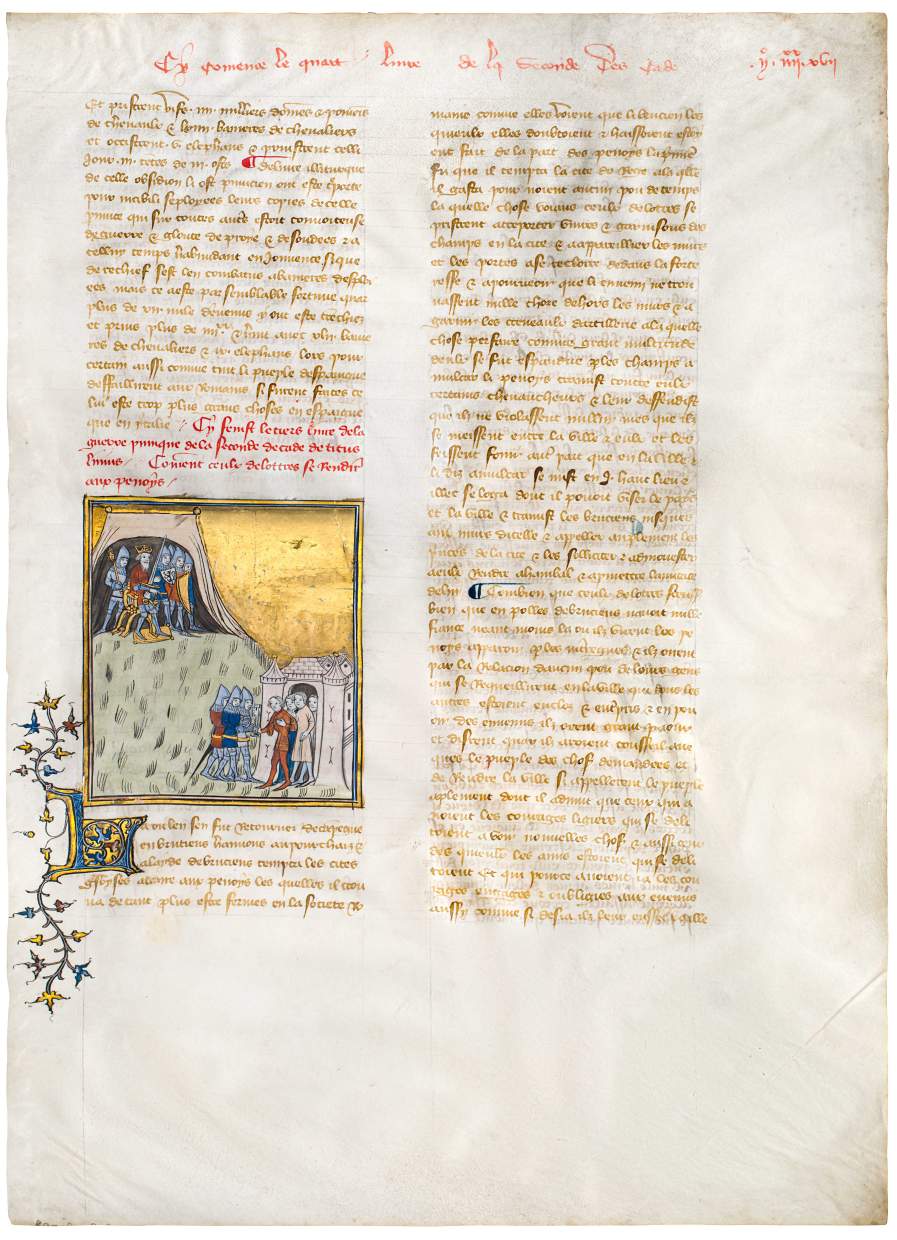Artworks


The people of Locri handing over the keys to their city,
Miniature on a leaf from Livy’s Histoire Romaine (Decade II, book 4) in the French translation of Pierre Bersuire on vellum, illuminated by Perrin Remiet.
France, Paris, c. 1390.

The people of Locri handing over the keys to their city,
Miniature on a leaf from Livy’s Histoire Romaine (Decade II, book 4) in the French translation of Pierre Bersuire on vellum, illuminated by Perrin Remiet.
France, Paris, c. 1390.
A dramatic scene unfolds against a glistening golden backdrop: the column-wide miniature shows Hanno, a commander of Hannibal's Carthiginians, and his soldiers in a tent, perched on a hill in the upper left corner. At the bottom of the hill on the right, the people of Locri stand before the city gate to hand over the key to theircity. By surrendering the key, the people of Locri looked ahead into an uncertain future, but bought their survival for another day.
Our leaf opens Decade II, book 4 of Pierre Bersuire’s translation of the great Roman historian Livy’s Ab urbe condita, on the second Punic war between Rome and Carthage (modern day Tunisia) in 215 BC. Around 1350, Jean le Bon, King of France (r. 1350-1364), commissioned French translations of all known works of Livy from Pierre Bersuire, a friend of Petrarch. Of the four French translations of Latin texts commissioned and promoted by the Kings of France, this leaf comes from the only text that is truly secular. This version became immensely popular at court even through to the period of King Charles VI (r. 1380-1422), when the parent manuscript for this leaf was produced.
Celebrated for his prolific output in Paris, the artist — Perrin Remiet (fl. 1383-1415) — illuminated many secular, historical volumes in the vernacular for the French royal court and other highly placed figures in the court’s orbit, including Dukes Jean de Berry and Louis d’Orléans. Remiet’s style has been described as looking back to the court style of the works produced for Charles V. His figures are rendered in demi-grisaille, with faces drawn in a cursory manner and inked over in strong black lines. Lead white pigment is used for skin and is touched with little, if any, shallow grey modelling. Faces are fleshy and terminate in defined, rounded chins, with noses drawn in strong diagonals reaching upward to connect with the eyebrow and down to nostrils in a short, straight horizontal line. The large, deep-set eyes have well-defined pupils in black ink, which respond animatedly to their scene’s action. Draperies for figures’ costumes drop heavily around bodies in colours like vivid orange, old rose, and lapis-lazuli blue mixed with white.



